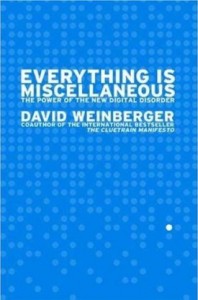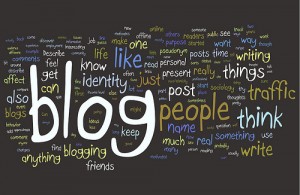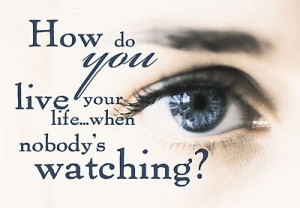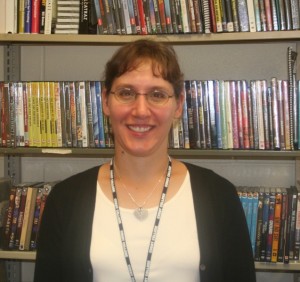 This book is not explicitly about social media. It is about much more than that: it is about how digital information – in combination with the power of online social networks – is changing our society in fundamental ways. This book goes beyond the usual observations, such as that we have access to more information than ever before, or that the Web enables us to communicate more, and gets at the heart of how these changes are changing us.
This book is not explicitly about social media. It is about much more than that: it is about how digital information – in combination with the power of online social networks – is changing our society in fundamental ways. This book goes beyond the usual observations, such as that we have access to more information than ever before, or that the Web enables us to communicate more, and gets at the heart of how these changes are changing us.
The digital world is a decidedly messy, cluttered, disorganized, and limitless place. Sometimes this place seems overwhelming, but David Weinberger argues that this messiness, or “miscellaneous-ness” is in fact a very good thing. He explains that digital information, if kept free and miscellaneous, random and disordered, social and collaborative, will bring about positive change in society. That, in fact, digital information is already causing society to be re-invented in crucial ways: it is changing the way we categorize and organize the world, changing the ways in which we interact as a society, and even changing the way we think.
Weinberger’s basic argument is that because digital information does not operate according to the same laws as the physical world, it does not need to be thought of, or used, in the same ways. Because digital information resides in unlimited virtual space, we no longer need authoritative experts to choose and sort what gets published – we “filter on the way out, not on the way in.” This means that information is becoming more democratized: traditional authority figures are losing control as ordinary people gain the power to choose and share what they want to know. Digital information is also enabling “social knowing” in ways never before conceivable, as people come together to create knowledge and meaning collaboratively.
Weinberger lays out the fundamental principles of the new digital world in the book’s first chapter. He defines three “orders of order:” The first order is how we organize physical objects – the way physical items are sorted on shelves, for example. The second order separates information about first-order objects from those objects – in other words, a card catalog. The third order – the digital order — is very different from the first two, as none of the limitations of the physical world apply. In the third order, information is freed from the rules that bind what Weinberger refers to as ‘atoms,’ or physical things: it can exist in multiple locations, it can be sorted and retrieved in multiple ways, and it can be shared and created collaboratively. And, perhaps most importantly, because of the unlimited space in the virtual world, third-order information no longer needs to be ‘filtered’ by experts.
Over the course of the rest of the book, Weinberger regales the reader with dozens of examples of how this third, or “miscellaneous,” order works. He contrasts “first order” entities – for example, the Encyclopedia Britannica, editors in a newsroom, or the Getty Thesaurus – with their third-order counterparts: Wikipedia, digg.com, social tagging. He shows how social media – including blogs, wikis, social networking, and social bookmarking — are helping to create the new third order, playing an important part in this reshaping of our world.
One of the most important changes brought about by third-order information is that it needs no expert “filterer” – no authoritative editor is needed to determine what we read, or to judge information’s accuracy or neutrality. To illustrate this point, Weinberger compares the Encyclopedia Britannica with Wikipedia. He describes how Wikipedia, by using social interaction and collaboration, effectively provides both accurate and neutral information. He cites the journal Nature’s discovery that “science articles in Wikipedia and Britannica are roughly equivalent in their accuracy,” and shows how Wikipedia achieves neutrality through group consensus. Neutrality in Wikipedia is a product of group editing, or, as Wikipedia’s founder claims, “an article is neutral when people have stopped changing it.” This, Weinberger points out, “is a brilliant operational definition of neutrality, one that makes it a function of social interaction,” rather than something that needs to be determined by experts or authority figures.
Social tagging is changing the way we search for and retrieve information. It is a messy, uncontrolled process, but somehow it seems to work. Weinberger investigates just how this happens by comparing the Getty’s Art and Architecture Thesaurus – a traditional controlled vocabulary – with the social tagging used on Delicious and Flickr. He concludes that despite the chaos of tagging – for example, all the problems with inconsistencies and spelling differences – the power of crowd sourcing is enough to make it effective. He notes how surprisingly effective a tag search is on Flickr, concluding that “the bigger the mess – more tags, and more tags per photo,” the more accurate searches become.
He does have some reservations about tagging, however, admitting that “tagging is too young to be predictable.” But he sees a bright future, pointing out that by increasingly combining user-created tags with social data mining, computers will be able to create more semantic meaning out of our currently messy tags. He points to Flickr as a good example of how this is already being done. Flickr determines what photos are “interesting” based not just on tags, but also on sophisticated algorithms that discover how photos are being used socially – including the number of views, the number of tags, and who is commenting on them. In this way, social data may in fact be the key to the emergence of a more Semantic Web.
In his chapter on “Social Knowing,” Weinberger delves into how social media will change education. This may be one of the most significant changes brought about by third-order information: the way it is changing how we learn. So far, third-order learning is mostly happening outside of the traditional classroom – students are learning socially on their own, while teachers continue to teach in traditional ways. He gives the example of how students often instant-message each other as they do their homework. “Our children are doing their homework socially,” he points out. They are asking questions of each other, and comparing answers. Traditional education might call this ‘cheating’ – but what will happen when today’s students become teachers? Will learning collaboratively become the new normal? And how will that effect how and what we know?
Weinberger believes that social knowing will result in our being able to go beyond creating knowledge – it will enable us to begin to create meaning. “In the world after the Enlightenment,” he says, “the cultural task was to build knowledge. In the miscellaneous world, the task is to build meaning.” We will do this by finding connections with one another, by sharing our ideas with one another, by learning about, and with, one another. Knowledge is no longer something isolated that is gained by individuals, rather it is something shared — and that sharing adds context and meaning, making us all smarter. At the conclusion of the book, Weinberger gives us all philosophical food for thought, stating that “the public construction of meaning is the most important project of the next hundred years.” This book helps us begin to understand how that project will proceed.
Everything is Miscellaneous should be read by anyone interested in social media, information organization, or social change. Weinberger astutely illustrates how the digital world is changing us and our society, making points that are thought-provoking and insightful. His arguments are, in general, well-supported, clear, and persuasive. He reassures us that although the burgeoning world of digital information can be overwhelming – who can really keep up with all their social media applications and RSS feeds? – this very chaos is slowly but surely creating a better future.



